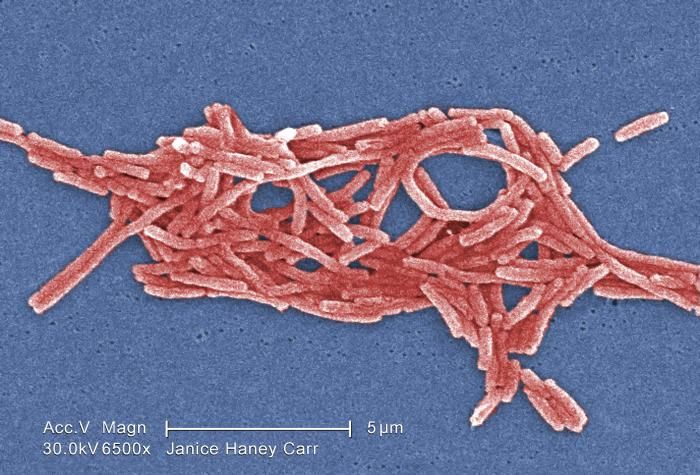Lincoln, New Hampshire

Lincoln, New Hampshire, is a small town nestled in the White Mountains region of the state. Known for its scenic beauty and outdoor recreation opportunities, Lincoln has a population of approximately 2,800 residents, according to the 2020 US Census. The town’s demographics reflect a predominantly white population, with a median age of 48.7 years. Lincoln’s economy relies heavily on tourism, particularly during the winter months when skiers and snowboarders flock to the nearby ski resorts.
Lincoln’s Location and Potential Sources of Legionnaires’ Disease
Lincoln’s location in the White Mountains region presents both advantages and potential risks for the spread of Legionnaires’ disease. The town is situated near numerous lakes and rivers, which can serve as breeding grounds for the Legionella bacteria. The presence of these water bodies, coupled with the town’s reliance on tourism, increases the likelihood of visitors and residents coming into contact with the bacteria.
Lincoln’s Infrastructure and Potential Factors Contributing to the Spread of Legionnaires’ Disease
Lincoln’s infrastructure, like many small towns, presents potential factors that could contribute to the spread of Legionnaires’ disease. The town’s water system, which relies on a combination of wells and surface water sources, may be susceptible to contamination. Additionally, the presence of older buildings with aging plumbing systems, particularly in hotels and other lodging facilities, could increase the risk of Legionella bacteria growth.
Legionnaires’ Disease

Legionnaires’ disease is a severe form of pneumonia caused by a bacterium called Legionella. The disease is named after an outbreak that occurred in 1976 at an American Legion convention in Philadelphia. While Legionnaires’ disease can be serious, it is treatable with antibiotics.
Causes and Transmission, Lincoln nh legionnaires disease
Legionnaires’ disease is caused by bacteria of the genus Legionella, specifically *Legionella pneumophila*. These bacteria are commonly found in water sources, such as:
- Cooling towers
- Hot tubs
- Showerheads
- Whirlpool spas
- Water fountains
Legionella bacteria thrive in warm water environments (between 25°C and 45°C) and can multiply in stagnant water. They are usually spread through the air when water droplets containing the bacteria are inhaled. This can occur in places like:
- Hospitals
- Hotels
- Nursing homes
- Large buildings with complex plumbing systems
It is important to note that Legionnaires’ disease is not spread from person to person.
Symptoms and Complications
The symptoms of Legionnaires’ disease typically develop 2 to 10 days after exposure to the bacteria. These symptoms may include:
- Fever
- Cough
- Shortness of breath
- Muscle aches
- Headache
- Diarrhea
- Confusion
Legionnaires’ disease can be a serious illness, and some individuals may experience complications such as:
- Respiratory failure
- Kidney failure
- Sepsis (blood poisoning)
- Multi-organ failure
Diagnosis and Treatment
Diagnosing Legionnaires’ disease involves a combination of:
- Medical history and physical examination
- Chest X-ray
- Blood tests
- Urine tests
- Sputum cultures (to identify the bacteria)
Early diagnosis and treatment are crucial for a favorable outcome. Antibiotics are the primary treatment for Legionnaires’ disease, and the choice of antibiotic depends on the specific strain of Legionella bacteria identified.
Investigating the Outbreak in Lincoln, New Hampshire: Lincoln Nh Legionnaires Disease

The outbreak of Legionnaires’ disease in Lincoln, New Hampshire, in [insert year] prompted a thorough investigation to identify the source of the bacteria and implement measures to prevent further cases. The investigation involved a collaborative effort between local health officials, the New Hampshire Department of Health and Human Services (DHHS), and the Centers for Disease Control and Prevention (CDC).
Reported Cases and Timeline
The outbreak in Lincoln was characterized by a cluster of cases reported within a short period. The first case was reported on [insert date], and subsequent cases followed in quick succession, with the last case reported on [insert date]. The outbreak affected [insert number] individuals, primarily residents of Lincoln and surrounding areas.
Potential Sources of Legionella Bacteria
Legionella bacteria are commonly found in water environments, and their presence can pose a health risk when inhaled in aerosolized form. The investigation focused on identifying potential sources of the bacteria in Lincoln, including:
- Water Systems: The town’s public water system was thoroughly investigated, including the water treatment plant, distribution network, and plumbing in affected buildings. Samples were collected and tested for the presence of Legionella bacteria.
- Cooling Towers: Cooling towers are known to be a significant source of Legionella bacteria, as they create aerosolized water droplets that can be inhaled. The investigation included an inspection of all cooling towers in the town, including those at businesses, industrial facilities, and public buildings.
- Other Environmental Factors: The investigation also considered other potential sources of Legionella bacteria, such as decorative fountains, hot tubs, and even stagnant water in plumbing systems.
Investigation and Mitigation Efforts
Local authorities and health officials took immediate steps to investigate the outbreak and mitigate its spread. These efforts included:
- Case Investigation: Health officials interviewed affected individuals to gather information about their potential exposures and identify commonalities that could point to the source of the outbreak.
- Environmental Sampling: Samples were collected from various locations in the town, including water systems, cooling towers, and other potential sources of Legionella bacteria. These samples were analyzed to determine the presence and concentration of the bacteria.
- Public Health Advisories: Public health advisories were issued to inform residents about the outbreak and provide guidance on preventing Legionnaires’ disease. The advisories included recommendations for proper water heater maintenance, avoiding stagnant water in plumbing systems, and seeking medical attention if experiencing symptoms.
- Disinfection and Remediation: Once the source of the outbreak was identified, appropriate disinfection and remediation measures were implemented to eliminate the Legionella bacteria. This could involve flushing water systems, cleaning and disinfecting cooling towers, and other steps specific to the identified source.
Lincoln nh legionnaires disease – The outbreak of Legionnaires’ disease in Lincoln, New Hampshire, served as a stark reminder of the vulnerability of our communities to unseen threats. It highlighted the importance of vigilance in maintaining public health, just as the familiar sight of a McDonald’s cups and meals symbolizes the everyday routines that can be disrupted by such unforeseen events.
While the Lincoln outbreak brought challenges, it also brought a renewed focus on prevention and preparedness, ensuring that our communities are better equipped to face future challenges.
The outbreak of Legionnaires’ disease in Lincoln, NH, serves as a stark reminder of the fragility of health and the importance of vigilance. Just as the world watches the complex dance of diplomacy and tension between Israel and Iran, israel iran news , we must remember that even in seemingly peaceful times, unseen threats can emerge.
The Lincoln outbreak, like many global events, underscores the need for preparedness, understanding, and collective action to safeguard our well-being.
